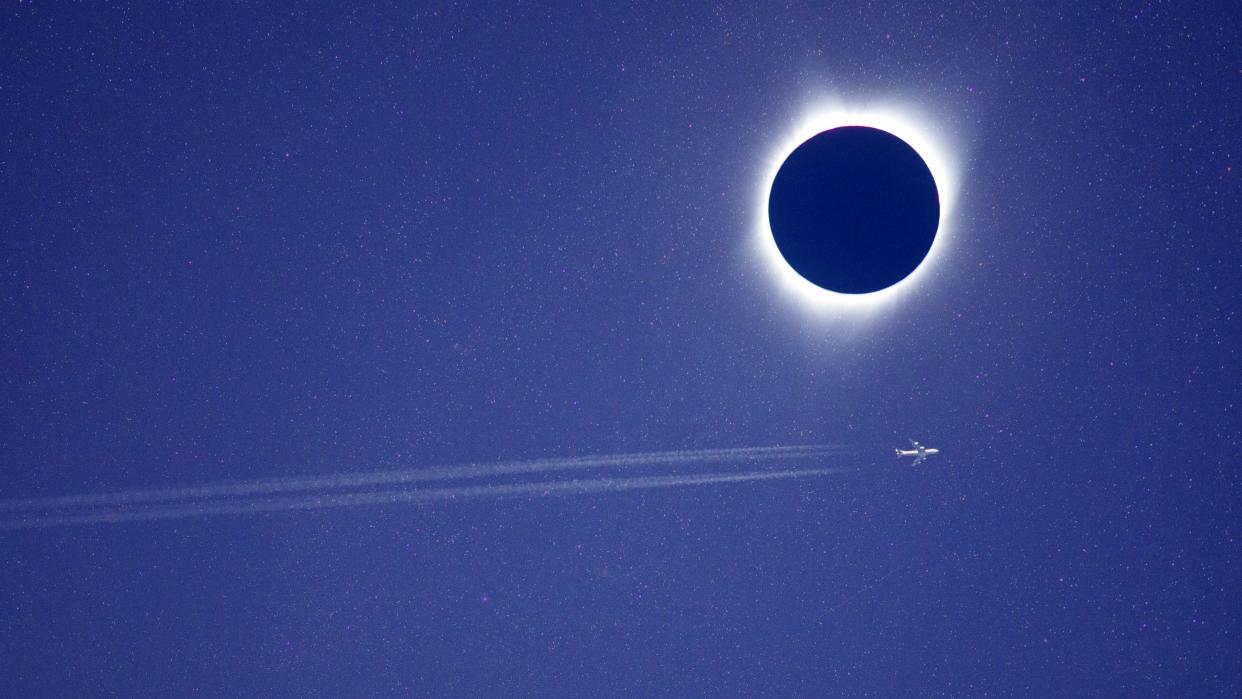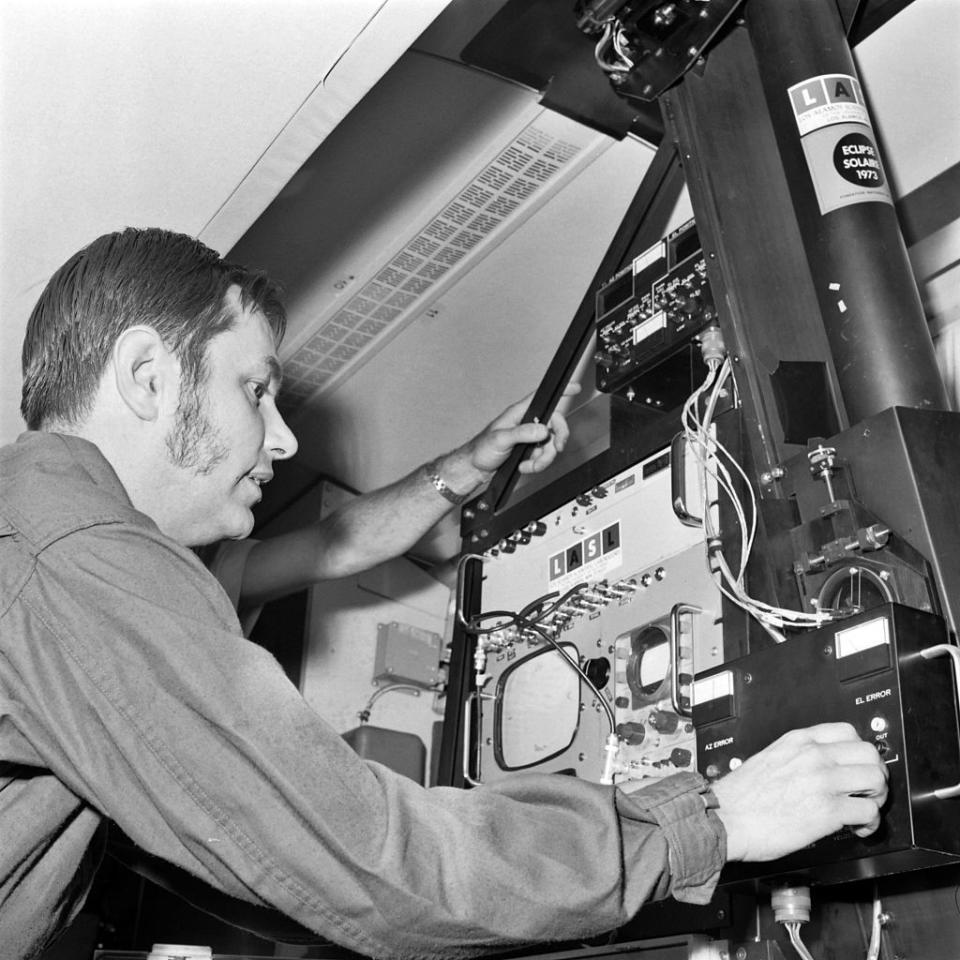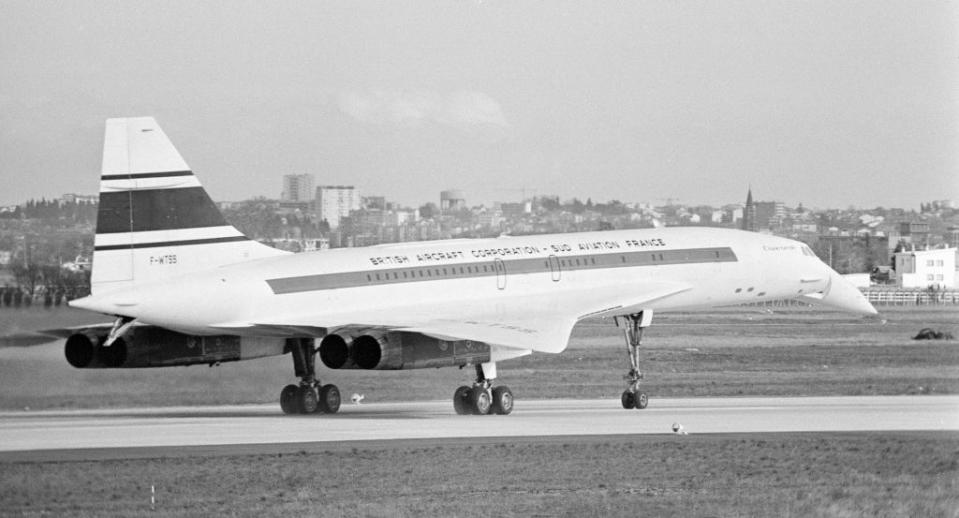How the supersonic Concorde jet broke the record for the longest total solar eclipse in history

Flying a plane into the moon's shadow during a total solar eclipse is a hot topic thanks to the upcoming solar eclipse. JSX has a dedicated eclipse flight over Dallas, and both United Airlines and Delta have long sold out tickets for scheduled flights through the path of totality on journeys from Texas to the Northeast.
But none will come close to achieving what Concorde 001 did on June 30, 1973, when it raced the moon's shadow along the Tropic of Cancer during a total solar eclipse.
Flying at 55,000 feet (17,000 meters), the world's fastest supersonic jet extended the duration of totality from a maximum of 7 minutes, 4 seconds on the ground to a stunning 74 minutes.
Related: How fast will April's total solar eclipse travel?
For the seven observers from France, Britain and the U.S., the flight broke the record for the longest total solar eclipse in human history. With the supersonic jet long retired from service, Concorde's historic 1973 flight remains legendary for eclipse chasers.
Record-breaking flight

On June 30, 1973, Concorde took off from Las Palmas, Gran Canaria, in the Spanish Canary Islands.
The path of totality that day was about 156 miles (251 kilometers) wide where Concorde intercepted it, with the moon's shadow moving at about 1,500 mph (2,400 km/h). Concorde flew at 1,350 mph (2,200 km/h) — Mach 2 — along the path of totality in the same direction as the moon's shadow, thereby keeping up with it as long as possible.
The scientists on board came from Los Alamos National Laboratory, the Paris Observatory, the Kitt Peak National Observatory, Queen Mary University of London, the University of Aberdeen, and the French National Center for Scientific Research.
Concorde 001 was modified just for them, with rooftop portholes created for observation equipment. The extra-long totality allowed these scientists to study the sun's corona, its chromosphere and the intensity of the sun's light from above much of Earth's atmosphere.

Related stories:
— A chronology of the April 8 total solar eclipse
— What happens if it's cloudy for the April 8 solar eclipse?
— How to give yourself the best chance of clear skies for April 8's solar eclipse
"We intercepted the totality and stayed within it for 74 minutes before descending and landing in the African nation of Chad," Donald Liebenberg, a scientist from Los Alamos National Laboratory who was on board the flight, wrote for NBC News. "At 74 minutes, our group aboard the Concorde set a record for the amount of time spent in totality that has never been broken. It was an experience I will never forget."
Concorde took off at 1008 GMT and raced above Mauritania as the moon's shadow caught up with it. Over the next four minutes, it flew across the Sahara in Mali, Nigeria and Niger before the moon's shadow overtook it. It landed in Chad.
In addition to experiencing the long totality, the scientists saw a seven-minute "first contact" and a 12-minute "third contact" — the beginning and end of the eclipse when viewers on the ground see a brief display of Baily's beads and the "diamond ring effect."
The 1973 flight wasn't the last time Concorde entered the moon's shadow during a total solar eclipse. Twenty-six years later, on Aug. 11, 1999, three Concordes — one from France and two from the U.K. — entered the moon's shadow, carrying tourists, as documented by French eclipse expert Xavier Jubier. Each paid $2,400 ($4,457 in today's dollars), though totality lasted only four or five minutes, compared with about two minutes on the ground. However, the passengers had problems seeing totality for more than 30 seconds because of the small windows and the sun's height.
It's a reminder that intercepting the moon's shadow in a plane isn't easy.
Final trip
The 1999 trips were Concorde's last into the path of totality. After the fatal crash of Air France Flight 4590 on July 25, 2000, just after takeoff, a planned eclipse flight on June 21, 2001, was canceled.
The most successful eclipse flight in recent years was E-Flight 2019-MAX, which on July 2, 2019, doubled the totality duration from 4 minutes, 32 seconds to 9 minutes. On board the LATAM Airlines Boeing 787-9 Dreamliner were 43 eclipse chasers, each of whom had paid $6,750.
Eclipse flights continue to spark the imagination, but it will be a long time until it's possible to surpass Concorde 001's 1973 achievement.
Submit your photos! If you capture a photo of the April 8 total solar eclipse and would like to share it with Space.com's readers, send photos, videos, comments, and your name, location and content usage permission release to [email protected].
